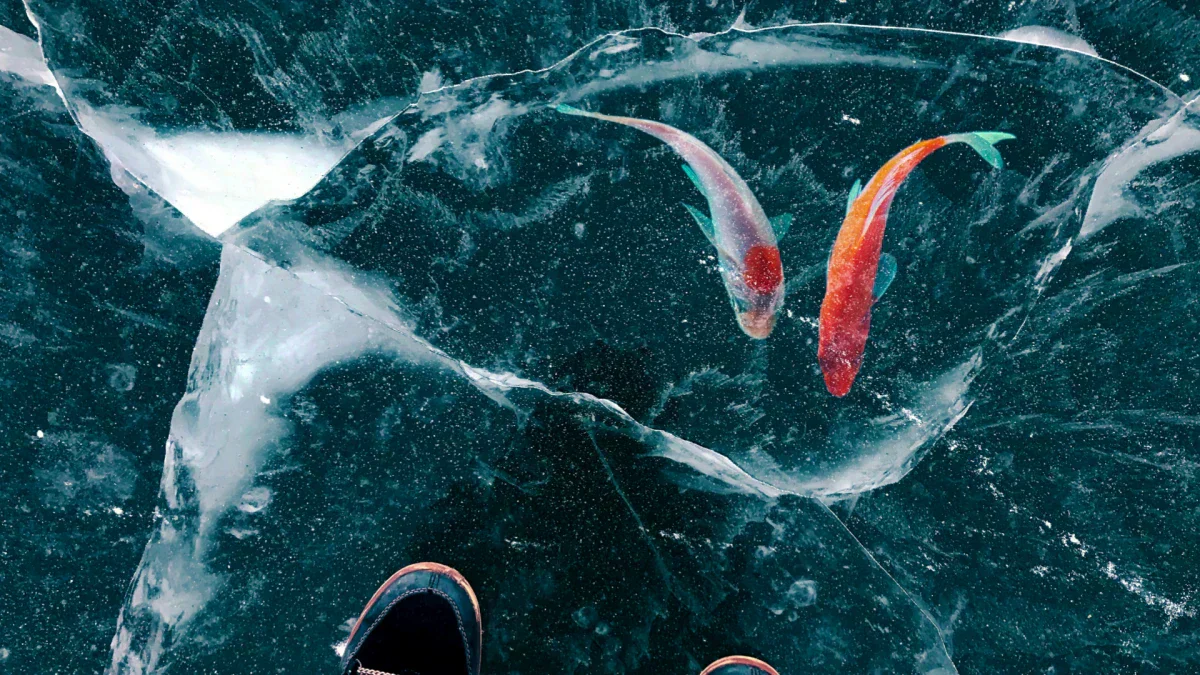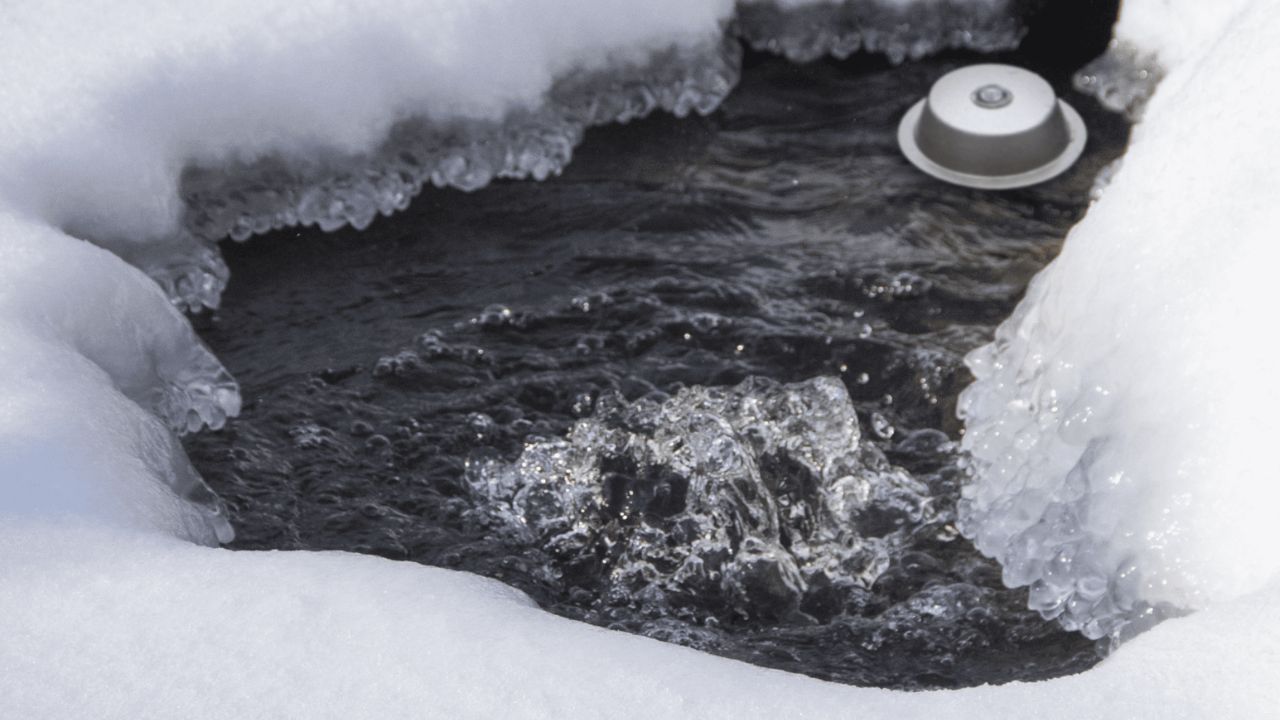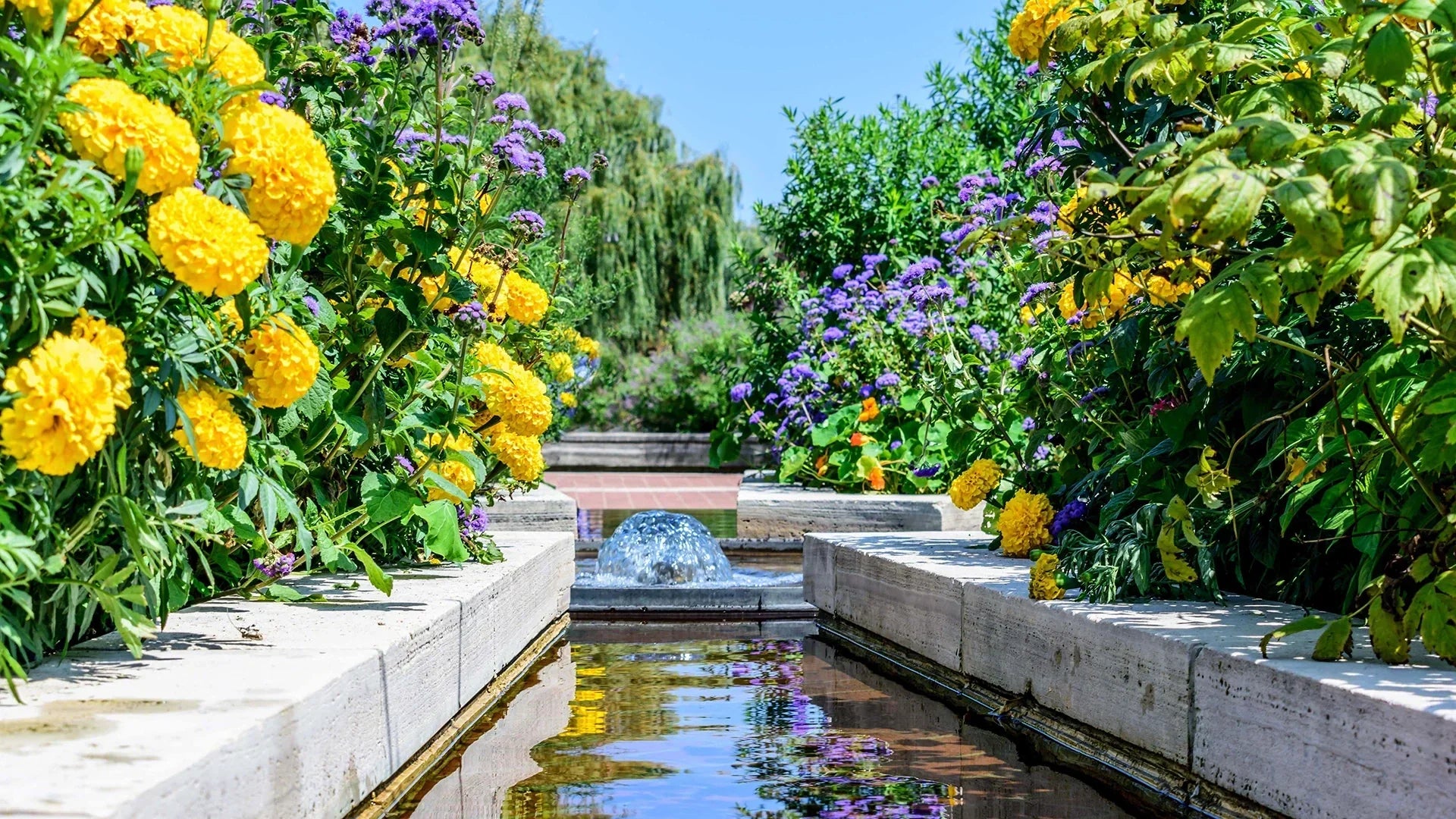Ever cupped your hands against a frosted patio window, trying to spot the slow silhouettes of koi beneath an ice crust? Winter doesn’t cancel the magic of pond-keeping—it changes the stage lighting. Snow dulls lawn colors, tree branches stand bare, and suddenly the water feature becomes the last living scene in the garden. Learning how to observe fish through a frozen lid lets you verify their health, share science moments with kids, and lose yourself in a hushed, glass-covered world most people never notice. With a few practical tricks—and a little help from Poposoap’s off-grid lights, aerators, and fountains—you can turn frigid months into the most intimate viewing season of all.

Introduction: Why Observe Fish In Winter?
Pond fish don’t hibernate; they downshift. Metabolism slows, colors deepen, and shoaling patterns tighten as koi and goldfish hover in the warmest layer just off the bottom. Watching those subtle changes tells you whether oxygen is adequate, whether a carp has injured a fin, or whether parasites are gaining a foothold while filtration is sluggish. Regular observation also reassures nervous newcomers that yes—fish can survive weeks under ice as long as basic needs are met.
Can You Really See Fish Beneath Ice?
Absolutely, provided you create one or two “viewing windows.” When a hard freeze seals the pond, melt a fist-size hole with a pan of hot (never boiling) water, then immediately set a double-walled clear plastic bucket over the opening. The bucket keeps the hole from refreezing and blocks wind glare. Peer straight down and you’ll catch slow tail flicks and the gentle pulsing of gill covers.

Avoid chiseling or hammering. Shock waves can stun or even kill fish. Controlled thawing keeps stress to a minimum and leaves the layered ice sheet intact—making the scene look like living stained glass when Poposoap Solar Pond Lights come on at dusk.
Tools To Help You Observe
- Poposoap Solar Pond Lights – Each IP68-sealed lamp nests on a plant shelf and charges through clear ice by day, then glows warm white or soft amber for six to eight hours. That low-kelvin hue penetrates water better than blue LEDs and avoids drawing moths that die on the surface and rot.
- Polarised glasses – Indoors or out, they cut surface glare even when you’re looking through the bucket portal.
- Floating thermometer – Drop it through the hole; 4 °C (39 °F) is perfect overwintering water. Anything below 1 °C near the bottom signals you should deepen the pond or add aeration next season.
- Notebook or phone app – Jot dates and notes. A pattern of sluggish fish after overcast weeks may prompt you to install a larger Poposoap Aerator next fall.
Tips For Safe Winter Observation
- Maintain gas exchange – Ice traps carbon dioxide and hydrogen sulfide. A Poposoap Solar Pond Aerator parked halfway to the bottom keeps a narrow up-flow of bubbles that won’t super-chill the warm layer yet carves a permanent vent hole—you’ll always have at least one ready-made observation port.
- Keep lights low and brief – Fish can stress if sudden brightness flips on. Poposoap lights fade up automatically at dusk and taper after six hours, mimicking winter daylength.
- Avoid heavy foot traffic on ice – Vibrations travel. Place a simple plywood bridge or sheet of insulating foam for kneeling near the hole rather than standing directly on the thickest plate.
- Feed sparingly, if at all – Below 50 °F (10 °C) koi can’t digest pellets. Uneaten food sinks, ferments, and clouds the view. Observation shortcuts the “Are they hungry?” impulse—you’ll see full bellies and slow gill beats, proof they’re fine without dinner.
Should You Intervene If Fish Look Stressed?
First verify water numbers: ammonium should read zero, nitrite zero, and pH between 6.8 and 7.8. If test strips are normal but fish gasp near the vent hole, increase aeration by adding a second Poposoap Aerator or—on sunny days—dropping in a small Poposoap Floating Fountain set to its low pluming cap. Because every Poposoap pump runs on daylight, you won’t add cords across brittle snowpaths or spike the electric bill.
If you spot white cotton tufts (fungus) or flashing (quick side rubs), plan treatments for early spring. Most medications are ineffective below 45 °F and can strip oxygen. Instead, boost water movement, vacuum sludge as soon as ice melts, and let rising temperatures and filtration finish the rescue.
Bonus: Make It An Educational Experience
- Ice lens experiment – Freeze a block in an old loaf pan, pop it out, then set it over the viewing hole. Kids can learn how curved surfaces magnify fish scales like waterproof binoculars.
- Light-color test – Cycle Poposoap RGB lamps through red, green, and white. Note which shades travel deepest and discuss wavelength absorption.
- Journal water chemistry – Weekly strips teach the relationship between temperature, feeding, and ammonia. Charting lets students predict when spring bacteria will restart.
- Citizen-science photos – A smartphone pressed to the bucket rim records time-lapse clips of koi shifting positions as daylight fades.
Conclusion: Respect The Silence Of Winter
A frozen pond isn’t a dead pond; it’s a slowed heartbeat. By carving safe observation windows, lighting them softly with solar LEDs, and keeping an oxygen vent bubbling, you stay connected to your fish without disrupting their mid-winter calm. Poposoap’s plug-free aerators and pond lights make the setup effortless, drawing energy from the same pale sun that glints off the ice.
Listen to the muffled fountain spray, watch breath trails rise in the thawed portal, and you’ll realise winter is less an off-season than a backstage pass—a chance to see your pond’s quiet endurance in action. Respect that hush, observe with gentle curiosity, and come spring you’ll greet fish that are not only alive but thriving, ready to burst through melting mirrors into the bright season ahead.







Leave a comment
All comments are moderated before being published.
This site is protected by hCaptcha and the hCaptcha Privacy Policy and Terms of Service apply.